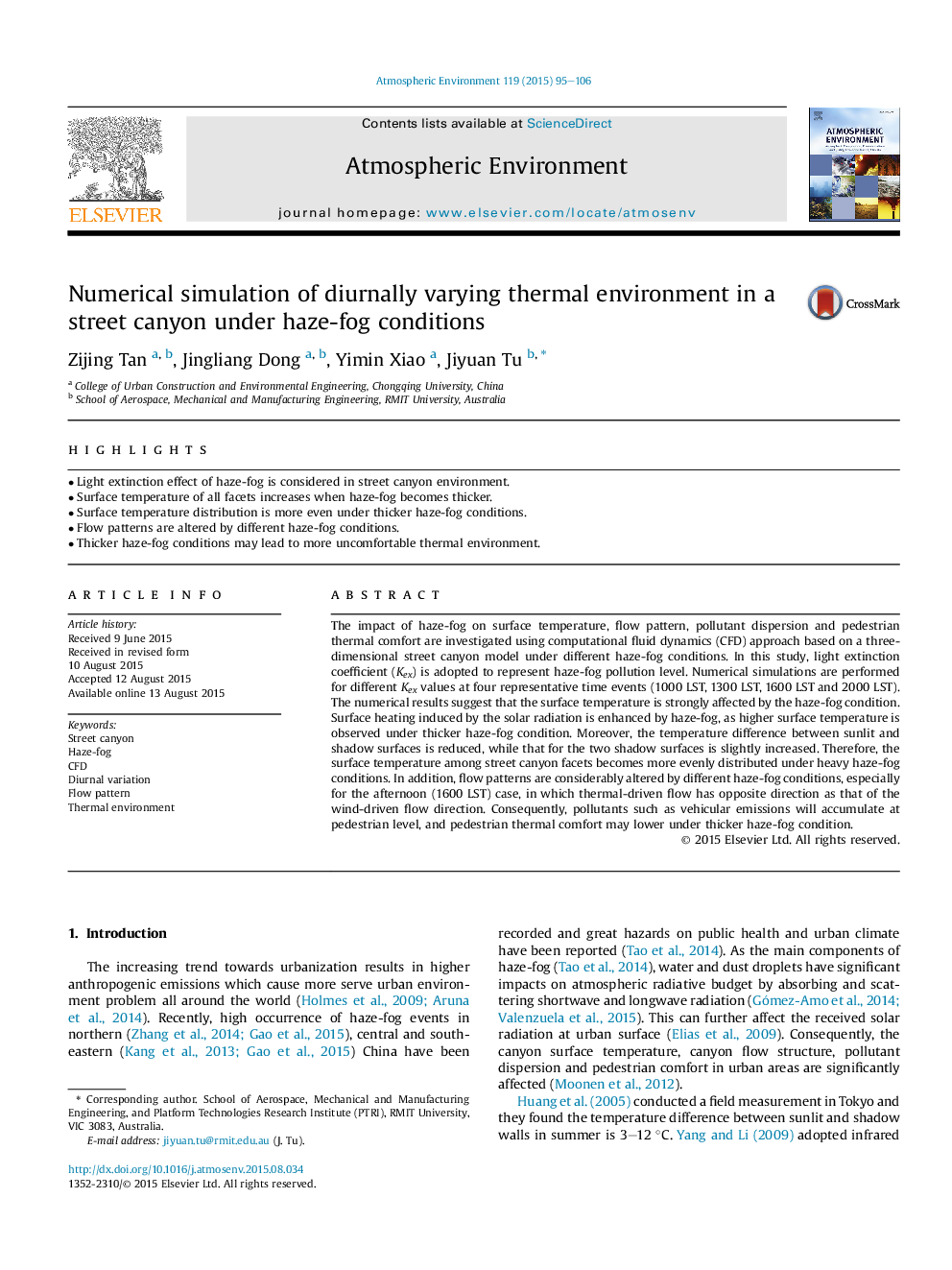| Article ID | Journal | Published Year | Pages | File Type |
|---|---|---|---|---|
| 6337620 | Atmospheric Environment | 2015 | 12 Pages |
Abstract
The impact of haze-fog on surface temperature, flow pattern, pollutant dispersion and pedestrian thermal comfort are investigated using computational fluid dynamics (CFD) approach based on a three-dimensional street canyon model under different haze-fog conditions. In this study, light extinction coefficient (Kex) is adopted to represent haze-fog pollution level. Numerical simulations are performed for different Kex values at four representative time events (1000 LST, 1300 LST, 1600 LST and 2000 LST). The numerical results suggest that the surface temperature is strongly affected by the haze-fog condition. Surface heating induced by the solar radiation is enhanced by haze-fog, as higher surface temperature is observed under thicker haze-fog condition. Moreover, the temperature difference between sunlit and shadow surfaces is reduced, while that for the two shadow surfaces is slightly increased. Therefore, the surface temperature among street canyon facets becomes more evenly distributed under heavy haze-fog conditions. In addition, flow patterns are considerably altered by different haze-fog conditions, especially for the afternoon (1600 LST) case, in which thermal-driven flow has opposite direction as that of the wind-driven flow direction. Consequently, pollutants such as vehicular emissions will accumulate at pedestrian level, and pedestrian thermal comfort may lower under thicker haze-fog condition.
Related Topics
Physical Sciences and Engineering
Earth and Planetary Sciences
Atmospheric Science
Authors
Zijing Tan, Jingliang Dong, Yimin Xiao, Jiyuan Tu,
